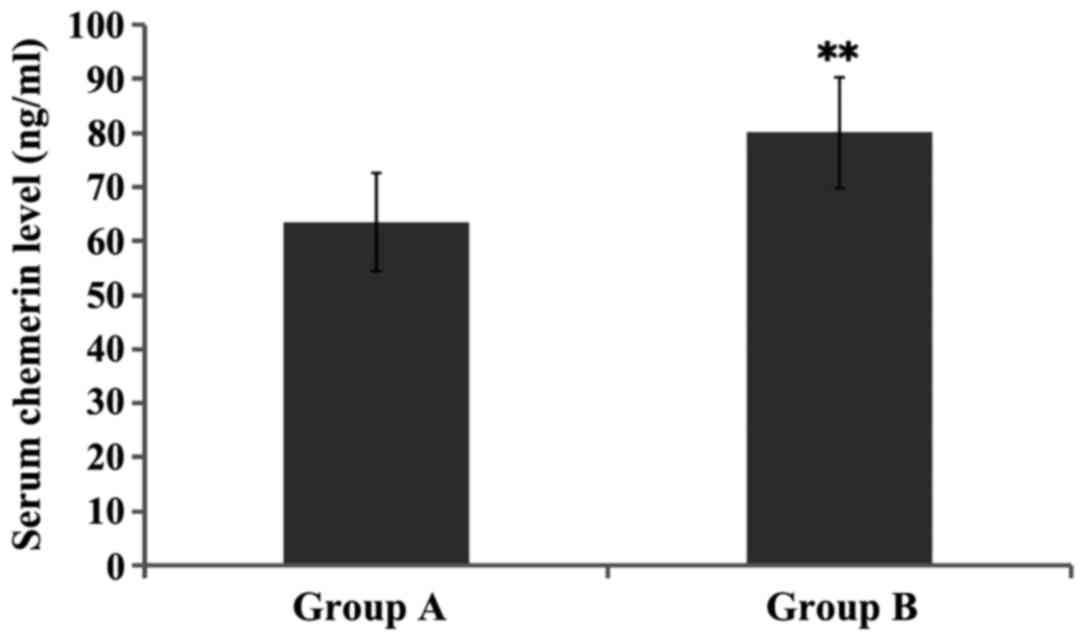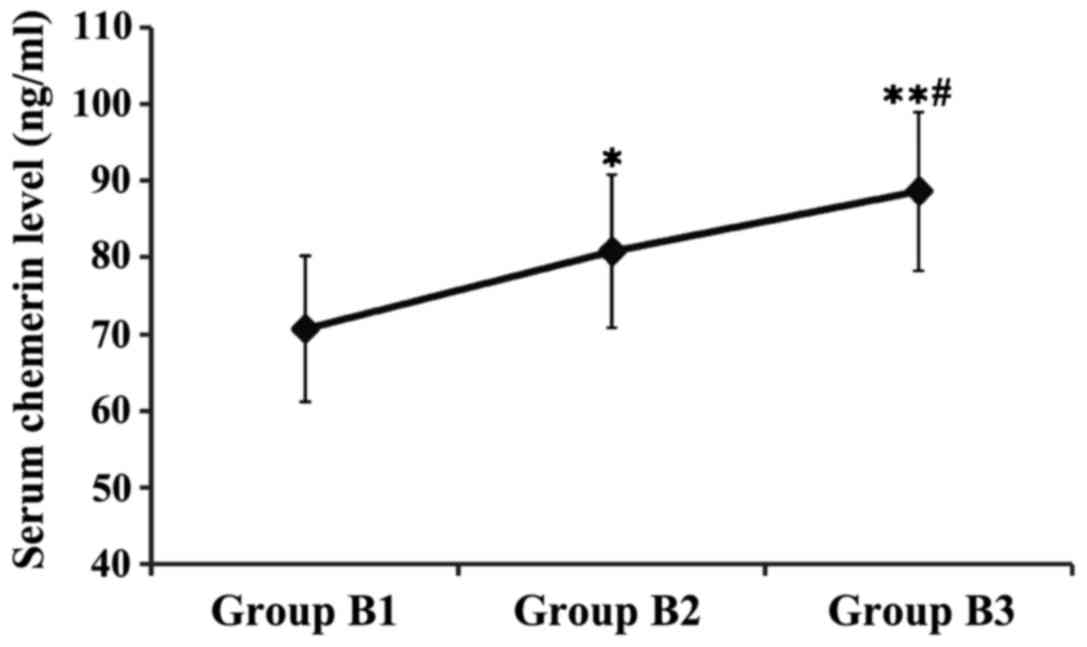|
1
|
Fruci B, Giuliano S, Mazza A, Malaguarnera
R and Belfiore A: Nonalcoholic fatty liver: A possible new target
for type 2 diabetes prevention and treatment. Int J Mol Sci.
14:22933–22966. 2013. View Article : Google Scholar : PubMed/NCBI
|
|
2
|
Mavrogiannaki AN and Migdalis IN:
Nonalcoholic fatty liver disease, diabetes mellitus and
cardiovascular disease: Newer data. Int J Endocrino.
2013:4506392013. View Article : Google Scholar
|
|
3
|
Targher G, Bertolini L, Poli F, Rodella S,
Scala L, Tessari R, Zenari L and Falezza G: Nonalcoholic fatty
liver disease and risk of future cardiovascular events among type 2
diabetic patients. Diabetes. 54:3541–3546. 2005. View Article : Google Scholar : PubMed/NCBI
|
|
4
|
Stepanova M, Rafiq N and Younossi ZM:
Components of metabolic syndrome are independent predictors of
mortality in patients with chronic liver disease: A
population-based study. Gut. 59:1410–1415. 2010. View Article : Google Scholar : PubMed/NCBI
|
|
5
|
Bozaoglu K, Bolton K, McMillan J, Zimmet
P, Jowett J, Collier G, Walder K and Segal D: Chemerin is a novel
adipokine associated with obesity and metabolic syndrome.
Endocrinology. 148:4687–4694. 2007. View Article : Google Scholar : PubMed/NCBI
|
|
6
|
Chu SH, Lee MK, Ahn KY, Im JA, Park MS,
Lee DC, Jeon JY and Lee JW: Chemerin and adiponectin contribute
reciprocally to metabolic syndrome. PLoS One. 7:e347102012.
View Article : Google Scholar : PubMed/NCBI
|
|
7
|
Alberti KG and Zimmet PZ: Definition,
diagnosis and classification of diabetes mellitus and its
complications. Part. 1:diagnosis and classification of diabetes
mellitus provisional report of a WHO consultation. Diabet Med 15:
539–553. 1998.
|
|
8
|
Macavei B, Baban A and Dumitrascu DL:
Psychological factors associated with NAFLD/NASH: A systematic
review. Eur Rev Med Pharmacol Sci. 20:5081–5097. 2016.PubMed/NCBI
|
|
9
|
Amarapurkar DN, Hashimoto E, Lesmana LA,
Sollano JD, Chen PJ and Goh KL; Asia-Pacific Working Party on
NAFLD, : How common is non-alcoholic fatty liver disease in the
Asia-Pacific region and are there local differences? J
Gastroenterol Hepatol. 22:788–793. 2007. View Article : Google Scholar : PubMed/NCBI
|
|
10
|
Day CP and James OF: Steatohepatitis: A
tale of two ‘hits’? Gastroenterology. 114:842–845. 1998. View Article : Google Scholar : PubMed/NCBI
|
|
11
|
Kim CH and Younossi ZM: Nonalcoholic fatty
liver disease: A manifestation of the metabolic syndrome. Cleve
Clin J Med. 75:721–728. 2008. View Article : Google Scholar : PubMed/NCBI
|
|
12
|
Moreno Sánchez D: Pathogenesis of primary
nonalcoholic fatty liver disease. Med Clin (Barc). 124:668–677.
2005.(In Spanish). PubMed/NCBI
|
|
13
|
Chitturi S, Wong VW and Farrell G:
Nonalcoholic fatty liver in Asia: Firmly entrenched and rapidly
gaining ground. J Gastroenterol Hepatol. 26 Suppl 1:163–172. 2011.
View Article : Google Scholar : PubMed/NCBI
|
|
14
|
Pacifico L, Nobili V, Anania C, Verdecchia
P and Chiesa C: Pediatric nonalcoholic fatty liver disease,
metabolic syndrome and cardiovascular risk. World J Gastroenterol.
17:3082–3091. 2011.PubMed/NCBI
|
|
15
|
Targher G, Valbusa F, Bonapace S,
Bertolini L, Zenari L, Rodella S, Zoppini G, Mantovani W, Barbieri
E and Byrne CD: Non-alcoholic fatty liver disease is associated
with an increased incidence of atrial fibrillation in patients with
type 2 diabetes. PLoS One. 8:e571832013. View Article : Google Scholar : PubMed/NCBI
|
|
16
|
Targher G, Bertolini L, Rodella S, Zoppini
G, Lippi G, Day C and Muggeo M: Non-alcoholic fatty liver disease
is independently associated with an increased prevalence of chronic
kidney disease and proliferative/laser-treated retinopathy in type
2 diabetic patients. Diabetologia. 51:444–450. 2008. View Article : Google Scholar : PubMed/NCBI
|
|
17
|
Jorgensen RA: Nonalcoholic fatty liver
disease. Gastroenterol Nurs. 26:150–155. 2003. View Article : Google Scholar : PubMed/NCBI
|
|
18
|
Azam G, Alam S, Hasan SKMN, Alam SMNE,
Kabir J and Alam AKMK: Insulin resistance in nonalcoholic fatty
liver disease. Experience from Bangladesh. Bangladesh Critical Care
Journal. 4:862016.doi: org/10.3329/bccj.v4i2.30022. View Article : Google Scholar
|
|
19
|
Targher G, Bertolini L, Padovani R,
Rodella S, Tessari R, Zenari L, Day C and Arcaro G: Prevalence of
nonalcoholic fatty liver disease and its association with
cardiovascular disease among type 2 diabetic patients. Diabetes
Care. 30:1212–1218. 2007. View Article : Google Scholar : PubMed/NCBI
|
|
20
|
Kelley DE, McKolanis TM, Hegazi RA, Kuller
LH and Kalhan SC: Fatty liver in type 2 diabetes mellitus: Relation
to regional adiposity, fatty acids, and insulin resistance. Am J
Physiol Endocrinol Metab. 285:E906–E916. 2003. View Article : Google Scholar : PubMed/NCBI
|
|
21
|
Peng L, Yu Y, Liu J, Li S, He H, Cheng N
and Ye RD: The chemerin receptor CMKLR1 is a functional receptor
for amyloid-β peptide. J Alzheimers Dis. 43:227–242.
2015.PubMed/NCBI
|
|
22
|
Lehrke M, Becker A, Greif M, Stark R,
Laubender RP, von Ziegler F, Lebherz C, Tittus J, Reiser M, Becker
C, et al: Chemerin is associated with markers of inflammation and
components of the metabolic syndrome but does not predict coronary
atherosclerosis. Eur J Endocrinol. 161:339–344. 2009. View Article : Google Scholar : PubMed/NCBI
|
|
23
|
Zhuang X, Sun F, Li L, Jiang D, Li X, Sun
A, Pan Z, Lou N, Zhang L and Lou F: Therapeutic effect of metformin
on chemerin in non-obese patients with non-alcoholic fatty liver
disease (NAFLD). Clin Lab. 61:1409–1414. 2015.PubMed/NCBI
|
|
24
|
Stejskal D, Karpisek M, Hanulova Z and
Svestak M: Chemerin is an independent marker of the metabolic
syndrome in a Caucasian population - a pilot study. Biomed Pap Med
Fac Univ Palacky Olomouc Czech Repub. 152:217–221. 2008. View Article : Google Scholar : PubMed/NCBI
|











